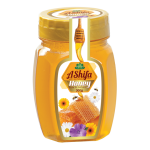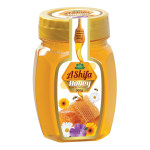The worker honey bee collects nectar from the flowers to make pure organic Honey. This allows bees to reproduce plants and produce better quality Honey. While flower nectar is the main ingredient in honey bee produced, it is not the only raw material source. Bees also collect all sugary liquids that can be used to make food. It is not uncommon to see bees rummaging through juices and soft drinks.
Honey Production and Storage
Bees have a stomach that stores food and a reservoir of best and Khali’s Honey (Shahad). This is where the bees collect the nectar from the flowers to transport it back to the hive. The bee can carry 70mg of sugary substance. After it has finished collecting, the bee returns to the hive. The nectar is already being transformed into pure organic Honey during transport. Small insects have glands in their mouths that produce enzymes. They produce two enzymes: glucose oxidase (invertase) and glucose oxidase (glucose oxidase).
Honey in Lahore, Pakistan is formed by the reaction of these substances with the nectar collected from the flowers. Invertase transforms sucrose, a type of sugar found in nectar, into glucose and fructose. In turn, glucose oxidase transforms small amounts of glucose into glycolic acids, which protect honey acid from bacteria that could cause it to ferment. By flapping their wings to dry the water in large quantities in the nectar, the bees dehydrate the Honey, killing other microorganisms.
- Pure Organic Honey 300g
- Pure Organic Honey 500g
- Pure Organic Honey 1kg
Arriving at the beehive
The workers bring the honey bags to Lahore, and the nectar is passed to the younger bees, who will then process it for approximately half an hour. The enzymes will then break down complex sugars found in nectar and convert them to simpler sugars. This makes the nectar more digestible and less susceptible to bacteria. The honeycombs are then covered with nectar, and the water is evaporated. The pure raw Honey in Lahore is slowly transformed into a thick syrup rich in sugar, vitamins, minerals, and carbohydrates.
Solar-powered robot honey bees can fly freely without any restrictions.
Scientists have long aspired to make flying machines as small as insects. This incredible feat has been achieved. The tiny robot generates enough momentum and is light enough to fly free of charge, thanks to its ultra-light solar cells.





